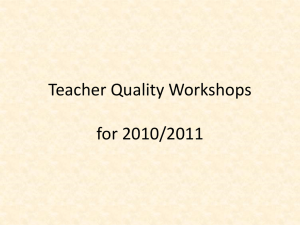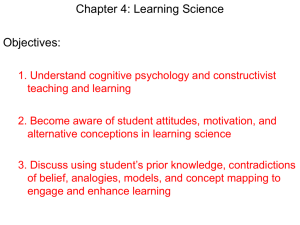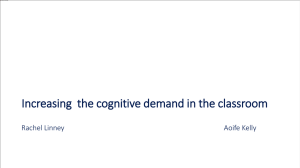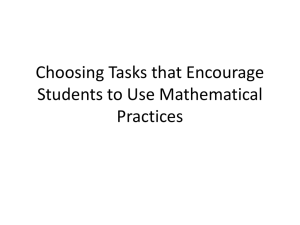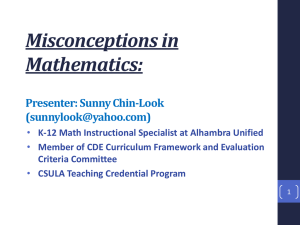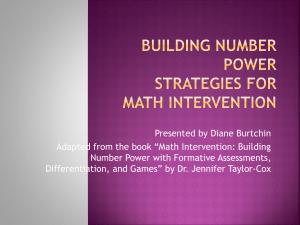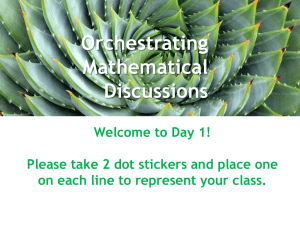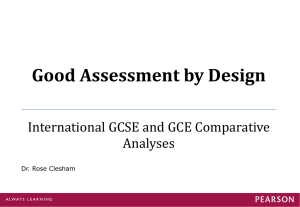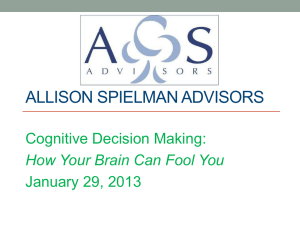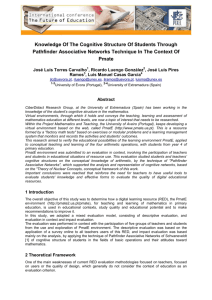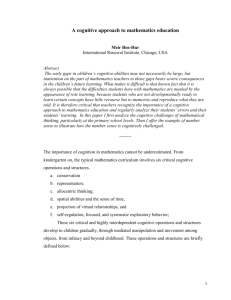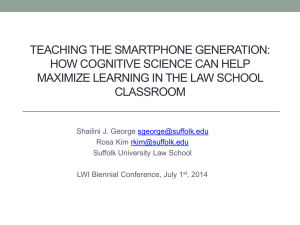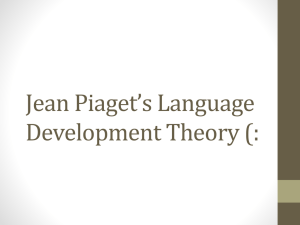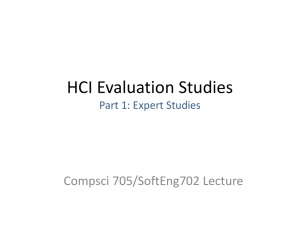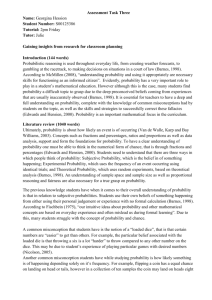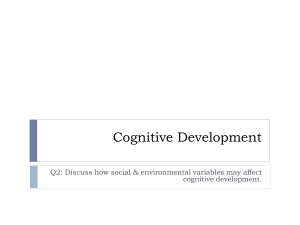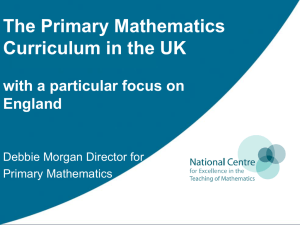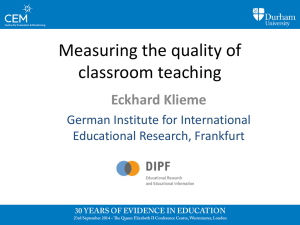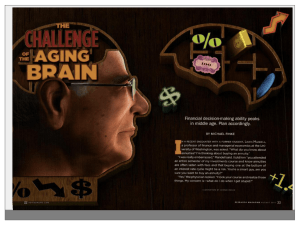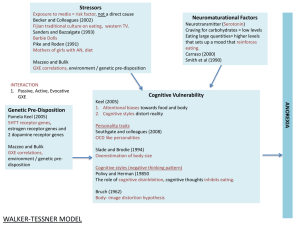Promoting Conceptual Change through Cognitive Conflict
advertisement
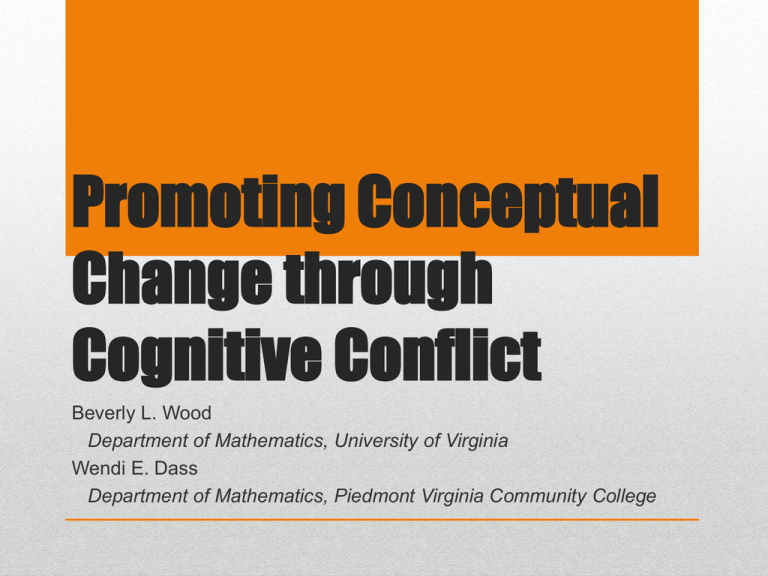
Promoting Conceptual Change through Cognitive Conflict Beverly L. Wood Department of Mathematics, University of Virginia Wendi E. Dass Department of Mathematics, Piedmont Virginia Community College Introduction APPLE Longfield, J. (2009). “Discrepant Teaching Events: Using An Inquiry Stance To Address Students’ Misconceptions,” International Journal of Teaching and Learning in Higher Education, 21(2), 266-271. Cognitive conflict and conceptual change refer to situations in which new knowledge (learned by a child, a student, or discovered by a research scientist) is incompatible with prior knowledge, and hence might affect understanding of the material…. Faced with having to absorb material that is in some way incompatible with prior knowledge…an individual will try to assimilate new information into their existing framework, thus creating a so-called synthetic model. As mixtures of beliefs and scientific facts, these synthetic models represent misconceptions about the subject. (emphasis added) Clark, M., & Lovric, M. (2009). Understanding Secondary-Tertiary Transition in Mathematics, International Journal of Mathematical Education in Science and Technology, 40(6), 755-776. Conceptual Change Through Cognitive Conflict 1) There must be dissatisfaction with existing conceptions. 2) A new conception must be intelligible. 3) A new conception must appear initially plausible. Posner, G. J., Strike, K. A., Hewson, P. W., & Gertzog, W. A. (1982). “Accommodation of a Scientific Conception: Toward a Theory of Conceptual Change,” Science Education, 66, 211227. doi:10.1002/sce.3730660207 Examples from Science Education Bridging Analogies - Physics Simulation - Mathematics Clement, J. (1987). “Overcoming Students’ Misconceptions in Physics: The Role of Anchoring Intuitions and Analogical Validity,” in Proceedings of the International Seminar Misconceptions And Educational Strategies in Science and Mathematics (Vol. 3), pp. 84-97. A Short Quiz Please take a moment to answer the questions on the handout. • If you teach mathematics or statistics, answer how you think your students would. Definitions The representativeness heuristic is the cognitive shortcut for assessing the likeness of objects or events to a prototype for the category (Gilovich & Savitsky, 2002). believing that the gender sequence of children in a large family BGGBGB is more likely than BBBBBG because it represents a closer fit to the theoretical 50/50 distribution of gender in the human population Kahneman and Tversky (1973) describe the availability heuristic as assigning likelihood based on the cognitive ease of imagining the uncertain outcome. estimating an event’s occurrence based on personal experience with the event, believing the frequency they have witnessed indicates probability Gilovich, T., Griffin, D., & Kahneman, D. (2002). Heuristics and Biases: The Psychology of Intuitive Judgment. Cambridge, UK: Cambridge University Press. Kahneman, D., & Tversky, A. (1973). “Availability: A heuristic for judging frequency and probability,” Cognitive Psychology, 5, 207-232. Examples from Statistics Education Bridging Analogies Simulation TARGET: A fair coin is tossed 5 times and the result is HHHHH . On the next toss, which outcome, if either, do you think has a better chance of occurring, H (heads) or T (tails) ? ANCHOR: A fair coin is tossed once and the result is H. On the next toss, which outcome, if either, do you think has a better chance of occurring, H (heads) or T (tails) ? a) H has a better chance of occurring b) T has a better chance of occurring c) They both have the same chance of occurring. Fast, G.R. (1999). “Analogies and Reconstruction of Probability Knowledge,” School Science and Mathematics, 99(5), 230-240. Liu, Tzu-Chien (2010). “Developing Simulation-Based Computer Assisted Learning To Correct Students' Statistical Misconceptions Based On Cognitive Conflict Theory, Using ‘Correlation’ as an Example,” Journal of Educational Technology & Society, 13(2), 180-192. More Simulations National Library of Virtual Manipulatives (nlvm.usa.edu) Spinners, Monty Hall simulation, rare events Center for Technology and Teacher Education (www.teacherlink.org) Plinko simulation, Excel projects Rice Virtual Lab in Statistics (onlinestatbook.com) Statistics Simulations Discussion How will you use cognitive conflict in your classroom?

